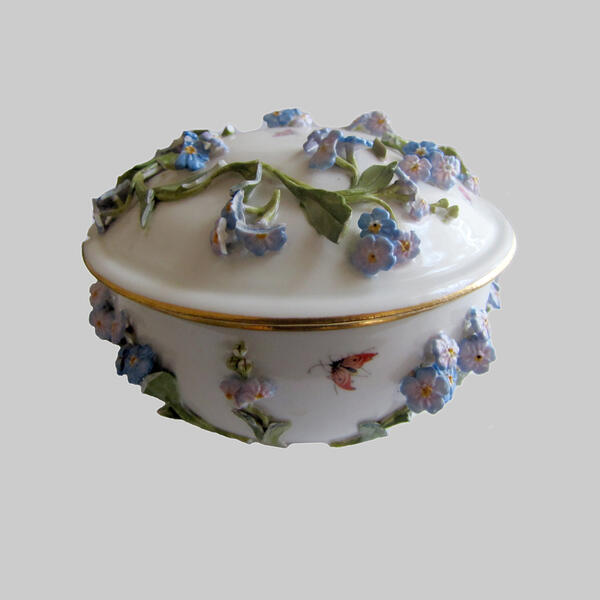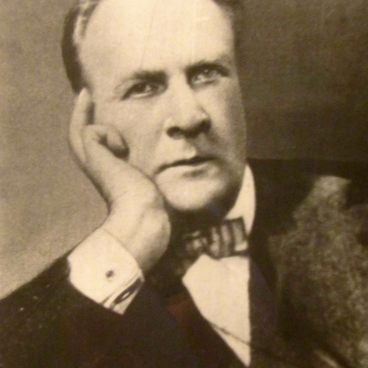The tureen was made at the Meissen Porcelain Factory. The dish was used to serve broths and soups or puree soups. In terms of size, all bouillon dishes were made the same, with a capacity of up to half a liter.
Porcelain was invented in China, and it is not a coincidence that it is called ‘china’ in English. Main ingredients needed to create this amazingly beautiful ceramic - kaolin, feldspar and quartz - and the production technology itself were kept in strict secrecy.
In the 16th-17th centuries, Dutch and Portuguese sailors began to bring porcelain to Europe, where it was used to decorate princely palaces and rich burgher houses. Expensive porcelain items instantly became objects of worship. They made it possible to demonstrate the high status and exquisite taste of the owner and, moreover, had a practical value in everyday life, especially as vessels for hot drinks.
Europeans were delighted with exquisite exotic products and did not abandon their attempts to reveal the secret of porcelain creation. But they were able to learn it only at the beginning of the 18th century, in Saxony. It was there that the key ingredients were identified, as well as their proportions and optimal firing conditions were selected. The prototype of white unglazed porcelain was received in 1708.
A laboratory journal for January 15, 1708 has survived, which describes the recipe and the process of firing the mass to obtain a white shard - this date is considered the birthday of the world’s first hard porcelain. The discovery was made by alchemist Johann Böttger and scientist Ehrenfried von Chirnhaus.
On January 23, 1710, the ruler of Saxony, August the Strong, by decree, announced the establishment of the first porcelain manufactory in Europe. The decree was drawn up in four languages at once: German, French, Latin and Dutch. Latin was addressed to learned men, French - to the aristocracy of all European courts, Dutch - to the merchant class.
That emphasized that the founding of the manufactory is an event of all-European significance. So the whole world should have learned that Saxony was the only country outside Asia that has learned to make porcelain that was not inferior to Chinese.
Porcelain was invented in China, and it is not a coincidence that it is called ‘china’ in English. Main ingredients needed to create this amazingly beautiful ceramic - kaolin, feldspar and quartz - and the production technology itself were kept in strict secrecy.
In the 16th-17th centuries, Dutch and Portuguese sailors began to bring porcelain to Europe, where it was used to decorate princely palaces and rich burgher houses. Expensive porcelain items instantly became objects of worship. They made it possible to demonstrate the high status and exquisite taste of the owner and, moreover, had a practical value in everyday life, especially as vessels for hot drinks.
Europeans were delighted with exquisite exotic products and did not abandon their attempts to reveal the secret of porcelain creation. But they were able to learn it only at the beginning of the 18th century, in Saxony. It was there that the key ingredients were identified, as well as their proportions and optimal firing conditions were selected. The prototype of white unglazed porcelain was received in 1708.
A laboratory journal for January 15, 1708 has survived, which describes the recipe and the process of firing the mass to obtain a white shard - this date is considered the birthday of the world’s first hard porcelain. The discovery was made by alchemist Johann Böttger and scientist Ehrenfried von Chirnhaus.
On January 23, 1710, the ruler of Saxony, August the Strong, by decree, announced the establishment of the first porcelain manufactory in Europe. The decree was drawn up in four languages at once: German, French, Latin and Dutch. Latin was addressed to learned men, French - to the aristocracy of all European courts, Dutch - to the merchant class.
That emphasized that the founding of the manufactory is an event of all-European significance. So the whole world should have learned that Saxony was the only country outside Asia that has learned to make porcelain that was not inferior to Chinese.



